Bhutan, Nepal & the Mystical Himalayas
October 5-27, 2011
BHUTAN - October 7-13, 2011
Page Seven - Thimphu
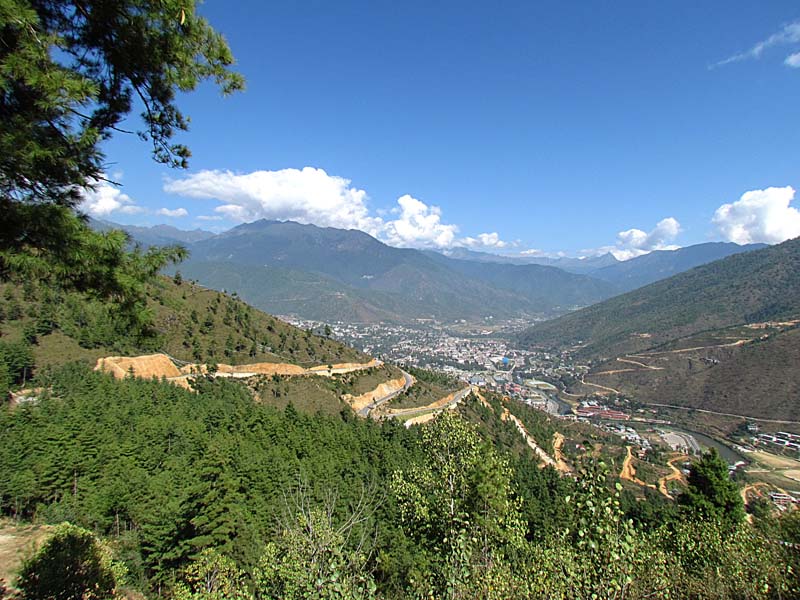
View of Thimphu and surrounding area as seen near the tall Buddha statue that is still under construction
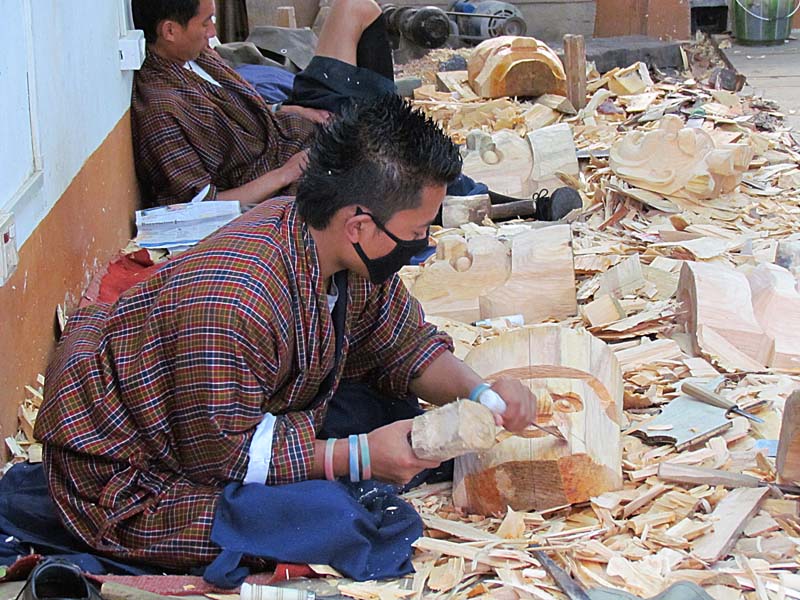
Trainee at the National Institute of Zorig Chusum, that is the center for Bhutanese Art education.
Zorig Chusum refers to the 13 traditional arts & crafts
that have been practiced for generations & passed down. The Institute
provides 4–6 years of training in Bhutanese traditional art forms. The curricula cover a comprehensive course of drawing,
painting, wood carving, embroidery, and carving of statues. Images of Buddha are a popular painting done here.
Articles for everyday use are still fashioned today as they were centuries ago. Traditional artisanship is handed down
from generation to generation. Bhutan's artisans are skilled workers in metals, wood and slate carving, and clay sculpture.
Artifacts made of wood include bowls and dishes, some lined with silver. Elegant yet strong woven bamboo
baskets, mats, hats, and quivers have both functional and decorative usage.
Handmade paper is prepared from tree bark by a process passed down the ages.
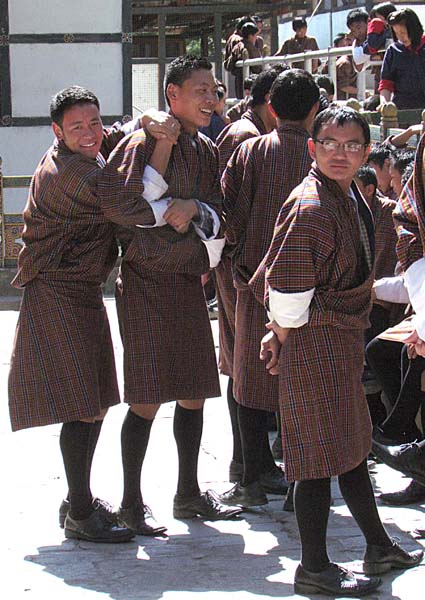
Students at the Institute on a break from their studying and practicing
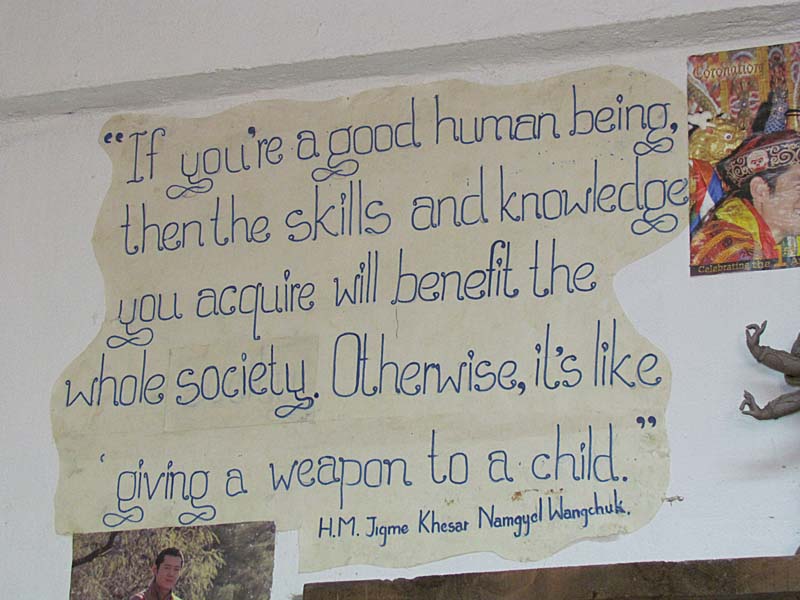
Quote from the current King hanging on the wall in the National Institute. "Gross National Happiness is more important than Gross
National Product" is the well known quote by his father, the previous King, Jigme Singye.
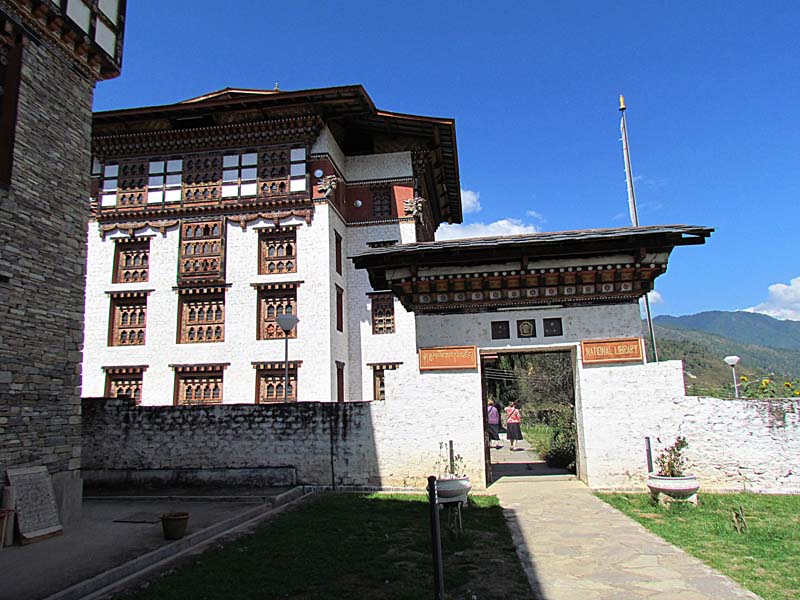
Established in 1967, built in the style of a traditional temple, the National Library houses many ancient texts.
It has been planned as "a major scriptural repository and research facility dedicated to the preservation
and promotion of the rich literary, cultural and religious heritage" of Bhutan. The building is very lavishly decorated
and is said to represent the finest vibrant Bhutanese architecture. On the ground floor of this building,
among the highly prized collections, there is a book reported to be the heaviest in the world, weighing 130 pounds,
known as "Bhutan: a Visual Odyssey Across the Last Himalayan Kingdom." Traditional books and historic manuscripts written
in Tibetan style, on hand made paper bound between wooden flats and tied together, are also preserved here.
The library also houses an old printing press that was used for printing books and prayer flags.
The library is also circumambulated by devotees as a mark of worship by the devout since it enshrines holy books
and images of Bhutan's famous people.
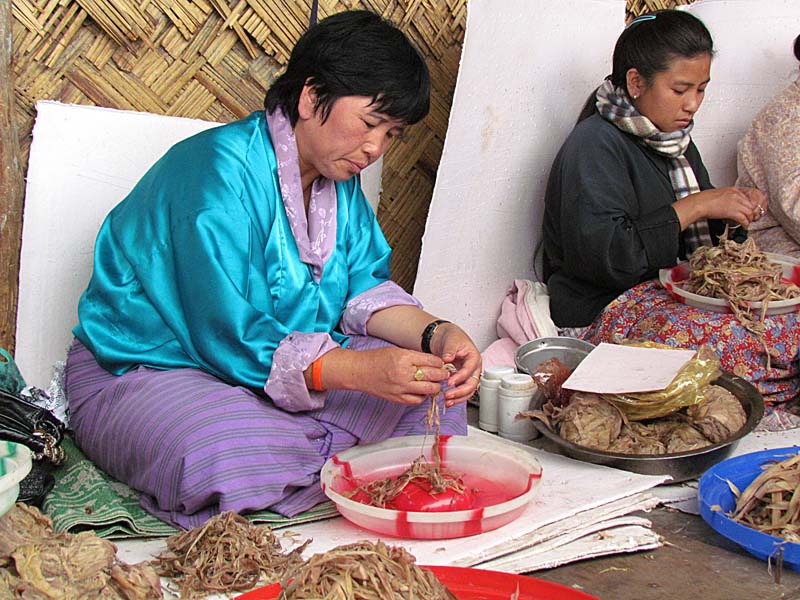
At a hand made paper making factory in Thimphu
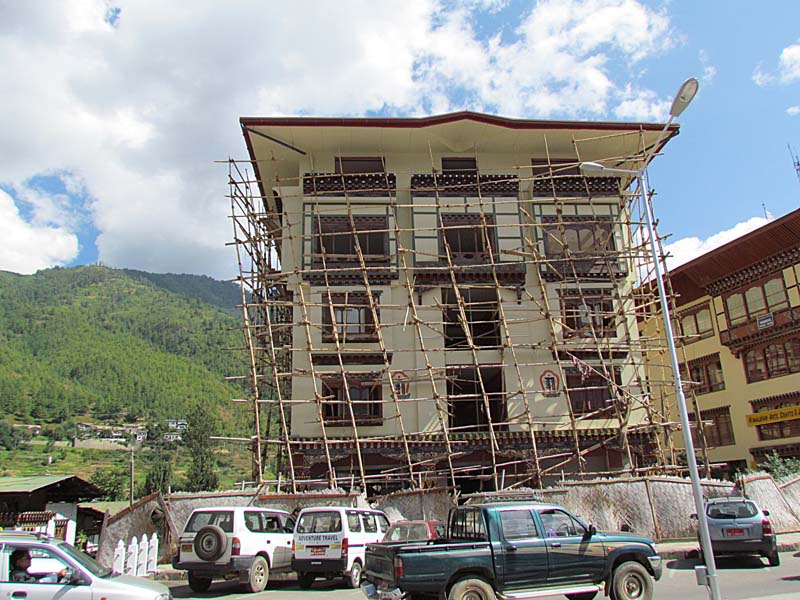
Bamboo scaffolding on a building under construction in Thimphu. Bamboo scaffolding is common, and it always looked like it was
about to collapse, like this does.
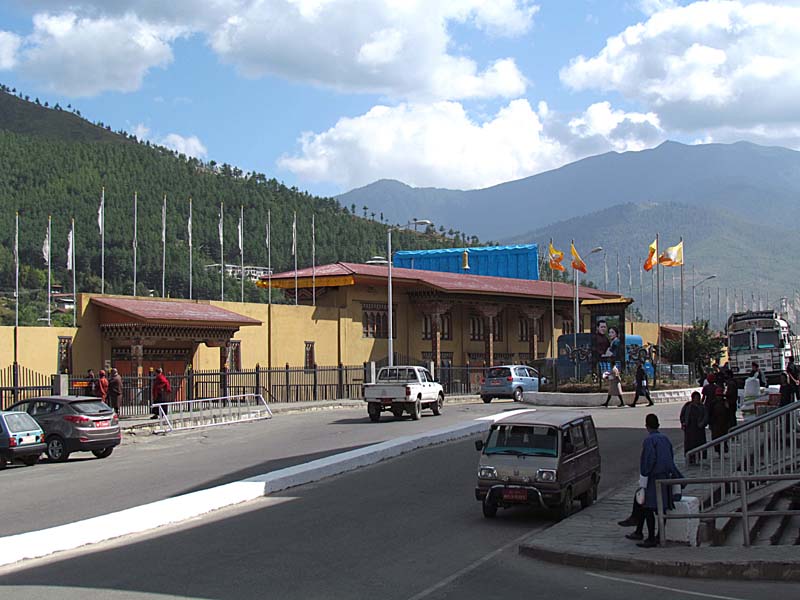
On October 14, the day after we left Bhutan, the King and Queen made their way from Punakha to Thimphu,
where streets and buildings had undergone thorough repair and decoration with five-colored scarves, portraits of the royal couple,
and lights to illuminate the city at night.Schoolchildren and townsfolk lined the main street of Thimphu as the King and Queen
passed into town. King Wangchuck and Queen Jetsun Pema appeared at a public celebration held at the this Stadium,
Changlimithang Stadium, on October 16, 2011, three days after their wedding at the Punakha Dzong.
On October 17, the royal couple celebrated a Hindu marriage ceremony and was received by the head of the Hindu community
and hundreds of Bhutanese Hindus. After exchanging garlands, lighting butter lamps, and offering prayers, the King and Queen
received statues of Vishnu and Laxmi, associated with royalty. In return, they donated money for a new Hindu temple
and for the Hindu community of Bhutan.
Mahayana Buddhism is the state religion, and Hindus have been actively persecuted as a minority,
including ethnic cleansing of perhaps 100,000 Hindu minorities (Lhotshampas) who presently live as refugees in Nepal. Therefore, this Hindu marriage
ceremony, following their Buddhist wedding,
may be significant for future developments regarding the refugee situation (my thoughts only).
Bhutan seems to realize that they need to take refugees back, but the Government is grappling with how to avoid accepting people back
that they fear could affect the cultural identity that is so important to them and that might try to foster insurgencies.
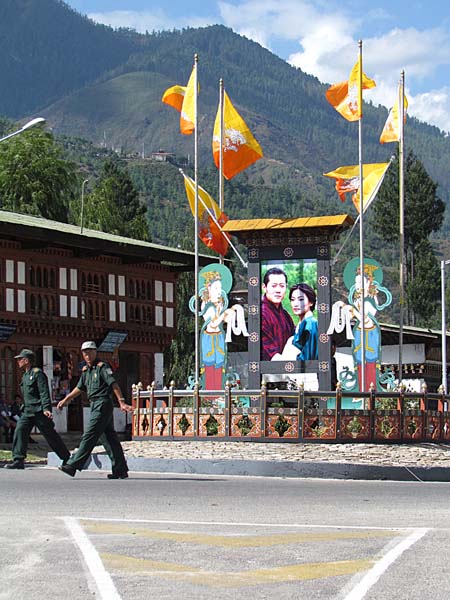
Portrait of the King and future Queen in Thimphu at an intersection
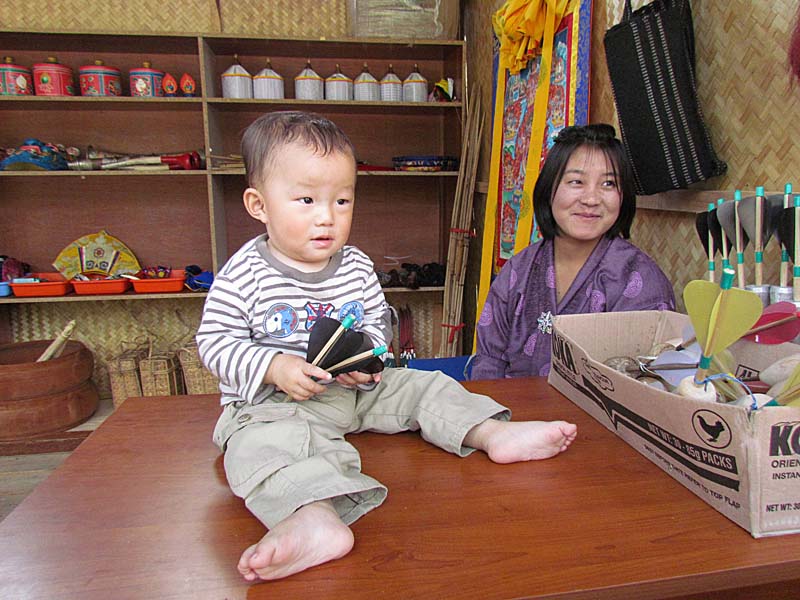
At a local souvenir market in Thimphu, the sales person with her baby.
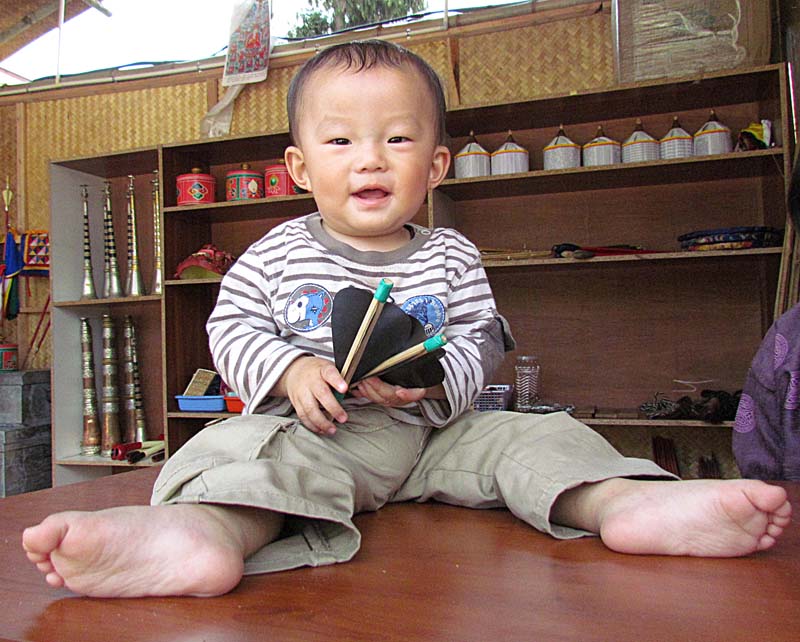
It took a little coaxing, but I managed to get a smile from him. He's holding darts.
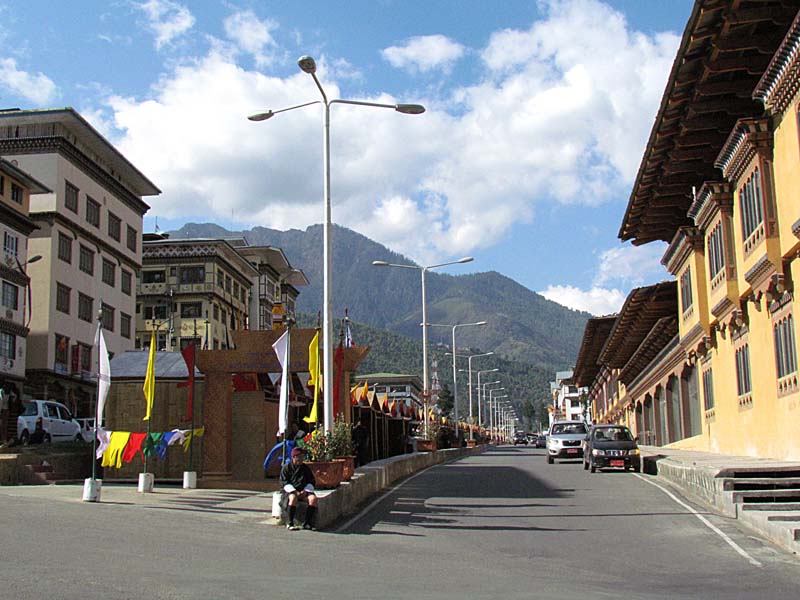
Part of the main street in Thimphu. The entrance to the souvenir market is the gate shown near the middle of the picture.
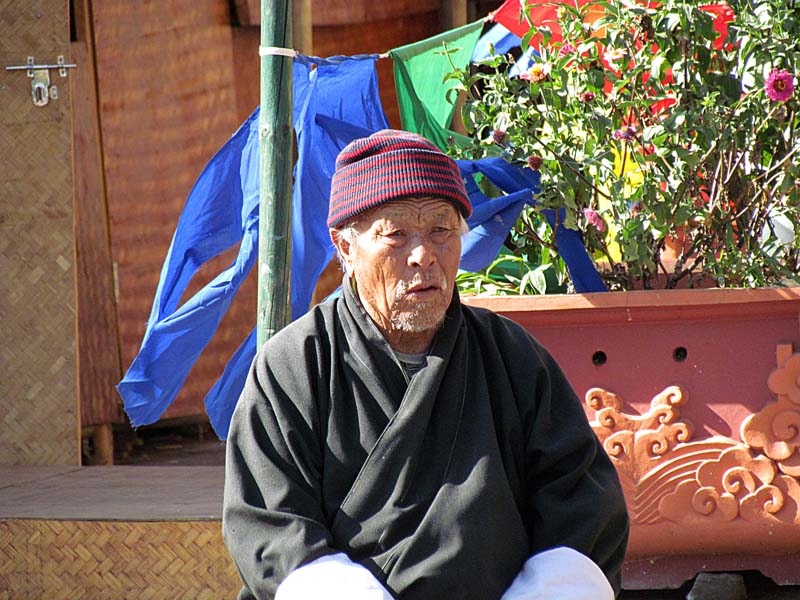
Old gentleman wearing the mandatory national dress for men, the gho, sitting in front of the sourvenir market.
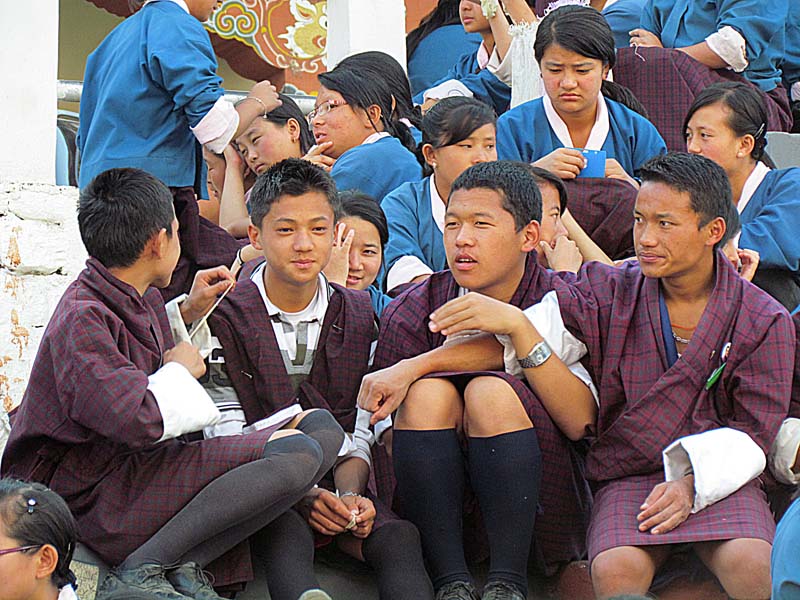
School kids in their school uniforms waiting for a pre-wedding event on October 12. They had been out cleaning the streets.
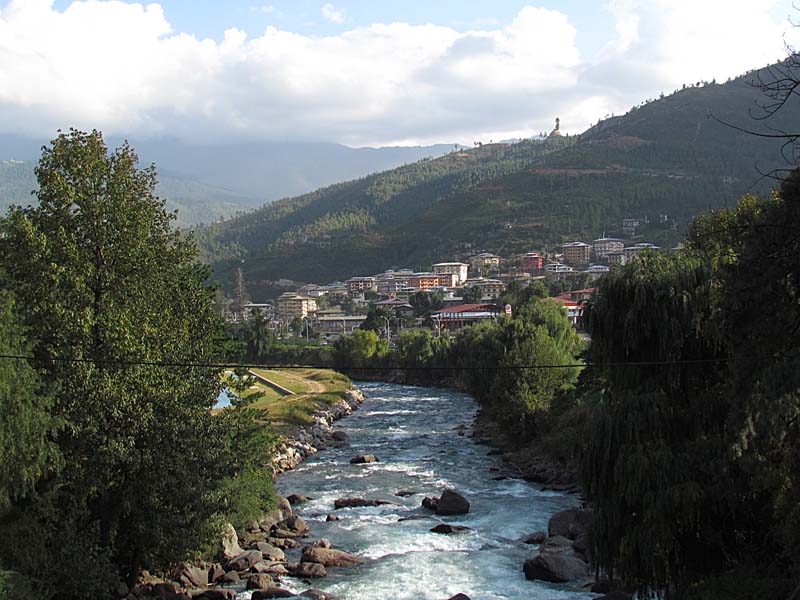
You can see the Buddha that is still under construction to the right up on the hillside from Thimphu.
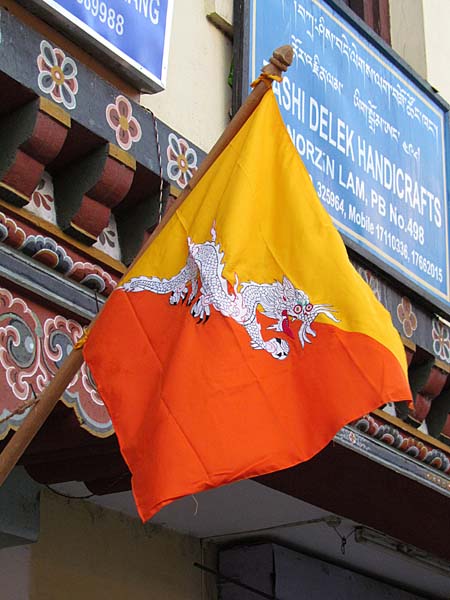
This is the national flag of Bhutan.
As stated in the Constitution of 2008, the yellow signifies civil tradition and temporal authority
as embodied in the Druk Gyalpo, the Dragon King of Bhutan, whose royal garb traditionally
includes a yellow scarf. The orange half signifies Buddhist spiritual tradition.
Druk, the Thunder Dragon, spreads equally over the line between the colors.
The placement of Druk, the Dragon, in the center of the flag over the dividing line between
the flag's two colors signifies the equal importance of both civic and monastic traditions in the
Kingdom of Druk, Bhutan, and evokes the strength of the sacred bond between the sovereign and people.
The white color of Druk signifies the purity of inner thoughts and deeds that unite
all the ethnically and linguistically diverse peoples of Bhutan. The jewels
held in Druk's claws represent Bhutan's wealth and the security and protection of its people,
while the dragon's snarling mouth symbolizes Bhutanese deities' commitment to the defense of Bhutan.
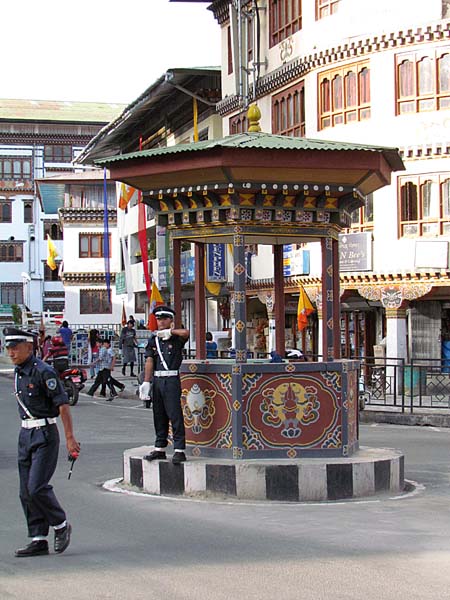
Policeman directing traffic at an intersection in Thimphu. There are no stop signs or stoplights anywhere in Bhutan.
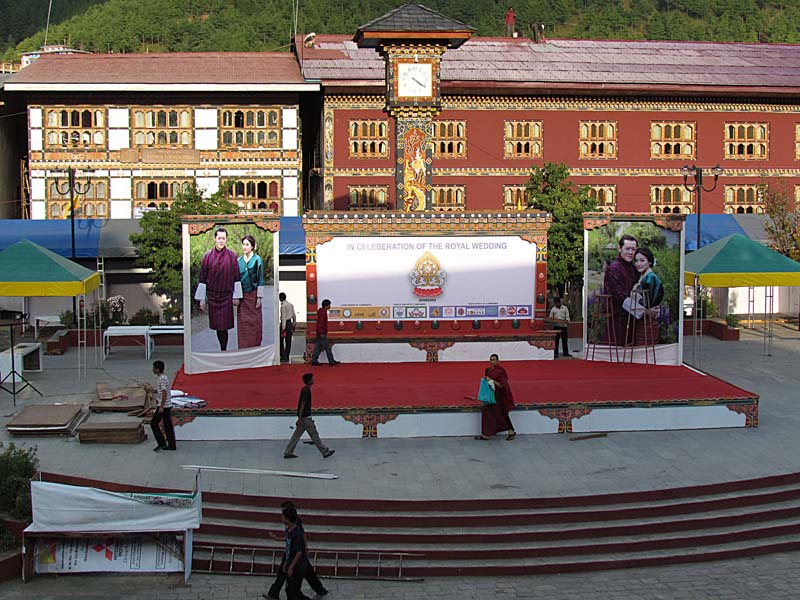
Clocktower Square. Area in Thimphu near the hotel where we stayed where ceremonies and public events are held. They were getting
ready for a
ceremony related to the wedding of the King and Queen on October 13.
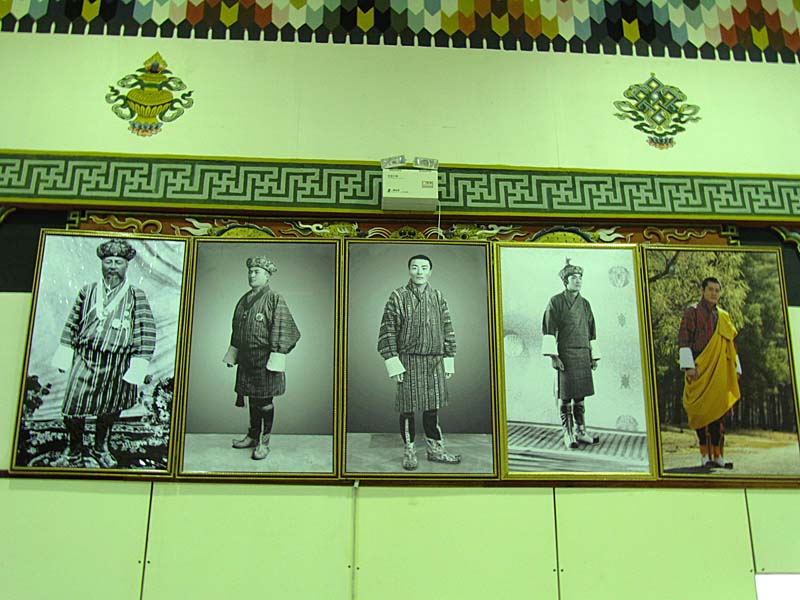
The Wangchuck Monarchu - all 5 kings of Bhutan, with the current king on the right. These photos were at the Paro, Bhutan Airport
from which we flew to Kathmandu, Nepal on October 13. We drove to Paro from Thimphu very early the morning of the 13th,
about an hour's drive.
THE END - BHUTAN - OCTOBER 7-13, 2011
Link to Page One of Bhutan
Link to Page One of Nepal
Pat's Home Page